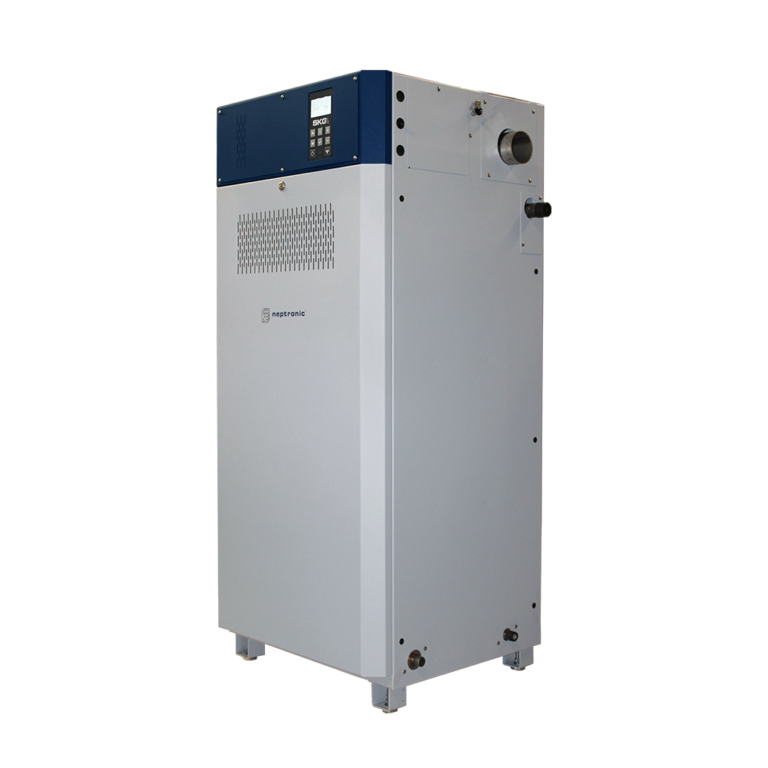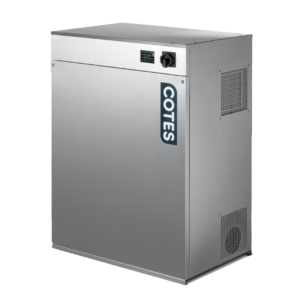The EU currently dedicated over 2.2 million hectares to growing vegetables and leafy produce, and over 3.2 million hectares to growing fruits. This produce is then picked, packed and shipped to countries all over the world – including the UK. But have you ever wondered how farmers and logistics companies manage to keep crops fresh and edible during this long process, and how they still have plenty of life in them when they arrive on your table? The answer is simple – humidification. Humidification solutions are important for two main areas of crop production: post-harvest crop care, and extending the shelf life of crops for purchase.
Post-Harvest Crop Care
Once crops have been harvested and other products created and packaged, they need to be transported to stores with enough life left in them to survive on the shelves. Humidification (also known as fogging) promoted faster, more efficient cooling, using less energy in the process. In post-harvest, ultrasonic humidity control solutions are the tool of choice, mainly because they use a finer water droplet size than high or low-pressure systems.
Keeping crops hydrated post-harvest is incredibly important, as it has a huge impact on their quality, their flavour and their lifespan. Once you separate the plants from their roots they will quickly dray out, especially in refrigerated environments that are designed to keep them from spoiling. You can’t avoid the refrigeration elements of harvesting, so instead farmers needed to focus on how to reduce the amount of moisture list post-harvest.
Trying to reduce the temperature of produce without dehydrating it is a common problem, especially when the main market uses refrigerated air-cooling systems to get the job done. If not handled properly refrigeration could damage delicate crops like herbs or other baby-leaf varieties through harsh cooling methods like blast chilling, leaving you with weak, dehydrated and broken produce. If you don’t believe us, one of the ways to tell how much your crops are being dehydrated is to measure the defrost water from the refrigeration system. It’s often alarming just how much water is being removed from products, simply through blast chilling. Of course, they could just add covers to their crops to manage airflow and minimise damage, but this isn’t a perfect solution.
The solution they came up with was called ‘fogging’. By ‘fogging’ the environment, transporters can sustain the life of these foods through natural hydration, using ultra-pure water in fog particles to reach into every corner and stop dehydration from occurring. This also allows producers to maximise the pick weight and yield, since the produce won’t lose its weight (and flavour) through dehydration. You can get both wet and dry fogging solutions, so produce can be protected at every stage, regardless of environment.
Extending Shelf Life
Once crops have gone through picking and packing, they need to be stored ready for transportation and somehow still arrive in shops with enough life to survive on the shelves and in the homes of buyers. With delicate crops like lettuce, this can present a real challenge – particularly if the crops were harvested a long distance away, or in a hot climate. Deterioration of produce can and does happen in transit, which just leads to more waste and reduced profits for farmers.
To overcome this, humidity control systems are needed at all stages of the produce’s life, starting in the picking trailer. By misting the field trailer, farmers can start the cooling process while the produce is still in the field, as soon as it had been picked. These misting devices produce a thin layer of moisture which can then evaporate during transit, stopping moisture being drawn from the produce itself.
Once the crops have been delivered into cold storage, most major growers, packers and shippers will then use an adiabatic crop hydration system to extend shelf life before shipping. These systems are now a standard part of all new-build cold storage units, but they can be retrofitted into old ones too. The idea is to humidify the air in the cold room to about 95% RH (Relative Humidity), and then fill the room with superfine purified water – to the point that it creates a visible fog. This allows moisture to fill every corner of the room using a vapour pressure system. Because the vapour pressure in the room is higher than the vapour pressure of the plants, it encourages the plants to draw in moisture through their stoma. This means that baby leaf crops, salad and brassicas can stay hydrated and field-fresh for up to 11 days, often coming out of cold storage in better condition than when it started! Given that most leafy produce will start to wilt after just 2 days in a normal environment, this is a huge improvement and a great way to improve the shelf life of produce, with no artificial chemicals or processes.
Humidity control is one of the most vital components in the entire food industry, and over the next few months we’ll be looking at different areas humidification plays a role in producing and protecting the food you eat.At Humidity Solutions, we supply humidity control solutions to farms, cold stores, packaging plants and more – helping provide the perfect environment for crop harvesting every time. If you would like to know more, just get in touch with us today.

